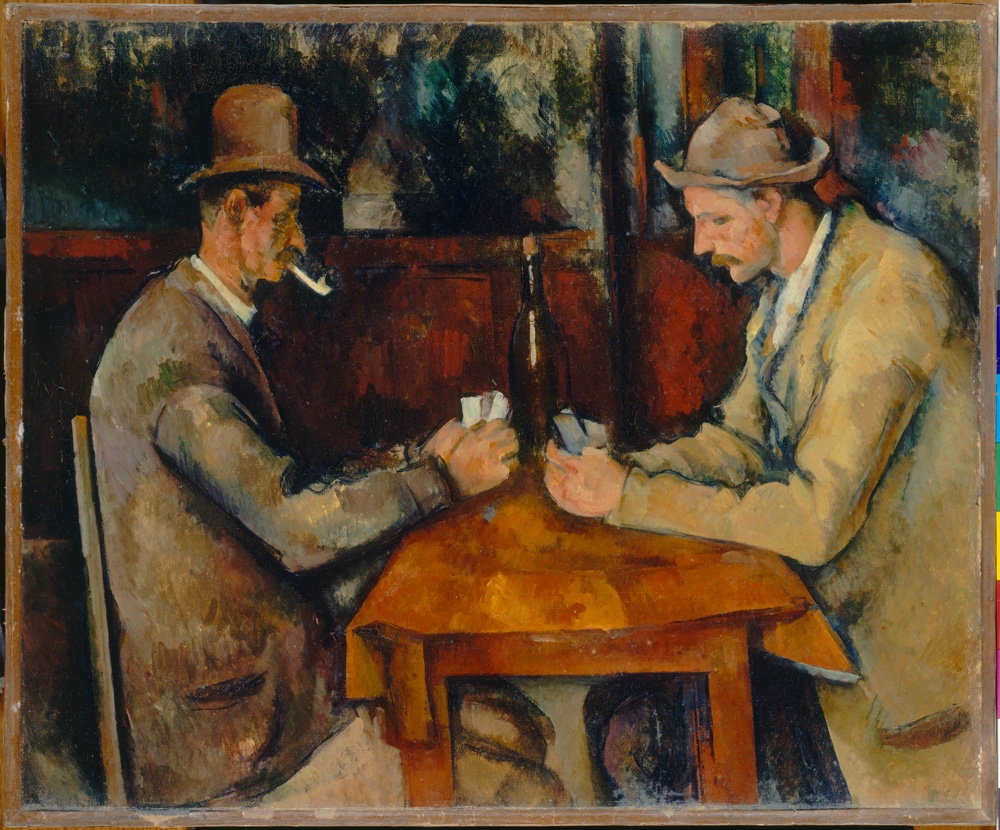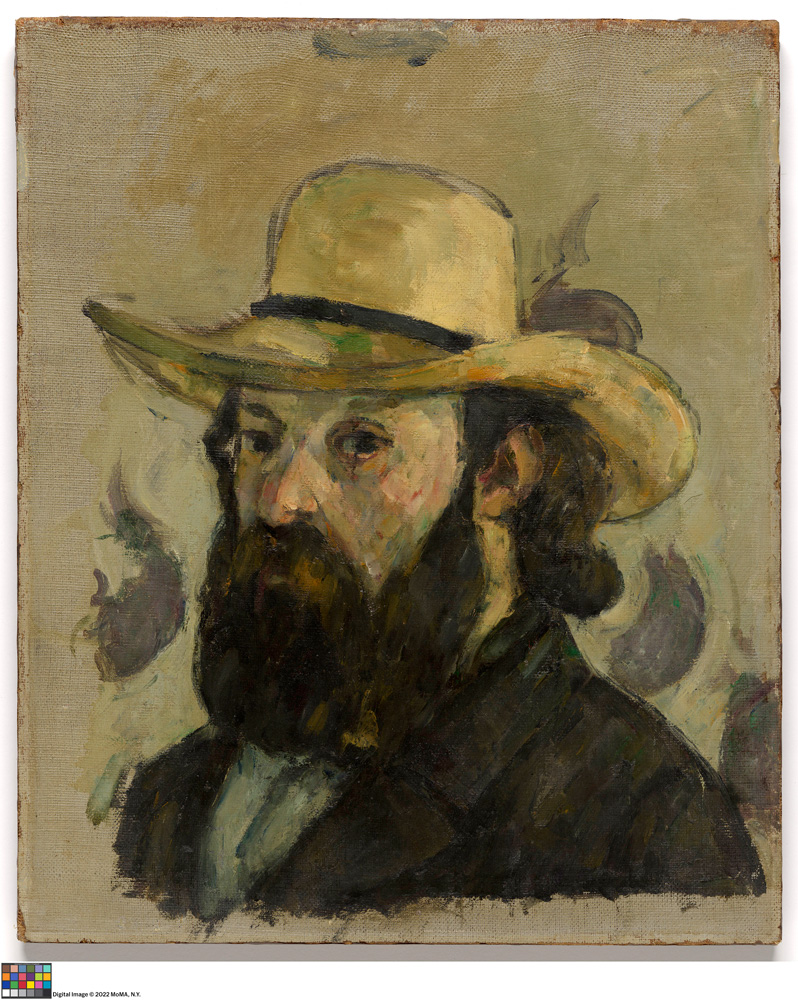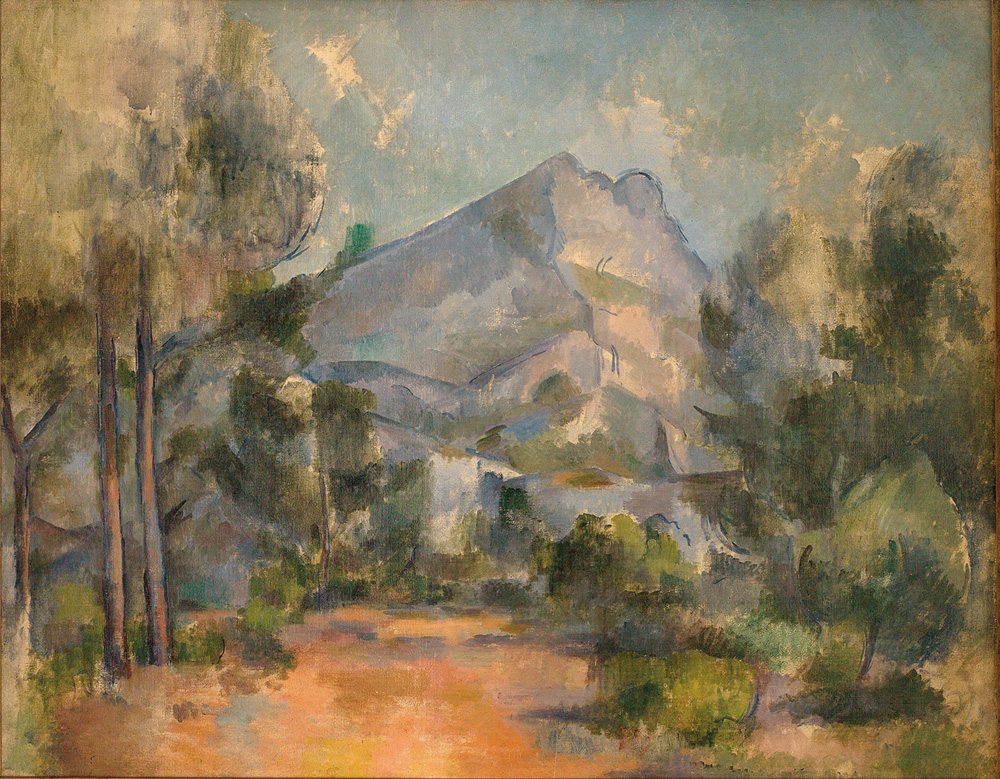Cezanne au Jas-de-Bouffan
The exhibition
Following the restoration of Jas-de-Bouffan, Cézanne's country house, the museums of Aix have brought together 130 paintings, drawings, and even objects painted in situ over a period of 40 years. A victory over the sun.
At the end of July 1990, unaware that Iraq was preparing to invade Kuwait, Etel Adnan went to see Cézanne's Sainte-Victoire exhibition in Aix. She dined in the Lauves studio, which Cézanne had built in 1901 and which was then inhabited by Marianne Bourges, since an American committee had donated it—against her will—to the Aix town hall in 1954. The curator and sculptor welcomed her into the garden and the small kitchen—something that would be difficult to imagine today, as the living areas on the ground floor are closed to visitors (before reopening, restored, in 2026). In “the reddish light of the place,” the Lebanese poet and painter understood why Cézanne remained “in this dry country where the light is unforgiving.” In Les Lauves, the view becomes “the friction of two atoms,” as the philosopher Lucretius wrote—whom Cézanne, who spoke Latin, had read. The reconstruction of the world can take place.
And also: Cézanne seen from Aix. Between legend and collective memory
Musée du Vieil Aix
Until January 5, 2026.
Bastide du Jas-de-Bouffan, until November 2, 2025.
L'Atelier des Lauves, until November 2, 2025.
Excerpt from Emmanuel Daydé's article published in issue No. 115 of Art Absolument magazine.
At the end of July 1990, unaware that Iraq was preparing to invade Kuwait, Etel Adnan went to see Cézanne's Sainte-Victoire exhibition in Aix. She dined in the Lauves studio, which Cézanne had built in 1901 and which was then inhabited by Marianne Bourges, since an American committee had donated it—against her will—to the Aix town hall in 1954. The curator and sculptor welcomed her into the garden and the small kitchen—something that would be difficult to imagine today, as the living areas on the ground floor are closed to visitors (before reopening, restored, in 2026). In “the reddish light of the place,” the Lebanese poet and painter understood why Cézanne remained “in this dry country where the light is unforgiving.” In Les Lauves, the view becomes “the friction of two atoms,” as the philosopher Lucretius wrote—whom Cézanne, who spoke Latin, had read. The reconstruction of the world can take place.
And also: Cézanne seen from Aix. Between legend and collective memory
Musée du Vieil Aix
Until January 5, 2026.
Bastide du Jas-de-Bouffan, until November 2, 2025.
L'Atelier des Lauves, until November 2, 2025.
Excerpt from Emmanuel Daydé's article published in issue No. 115 of Art Absolument magazine.
When
28/06/2025 - 12/10/2025


